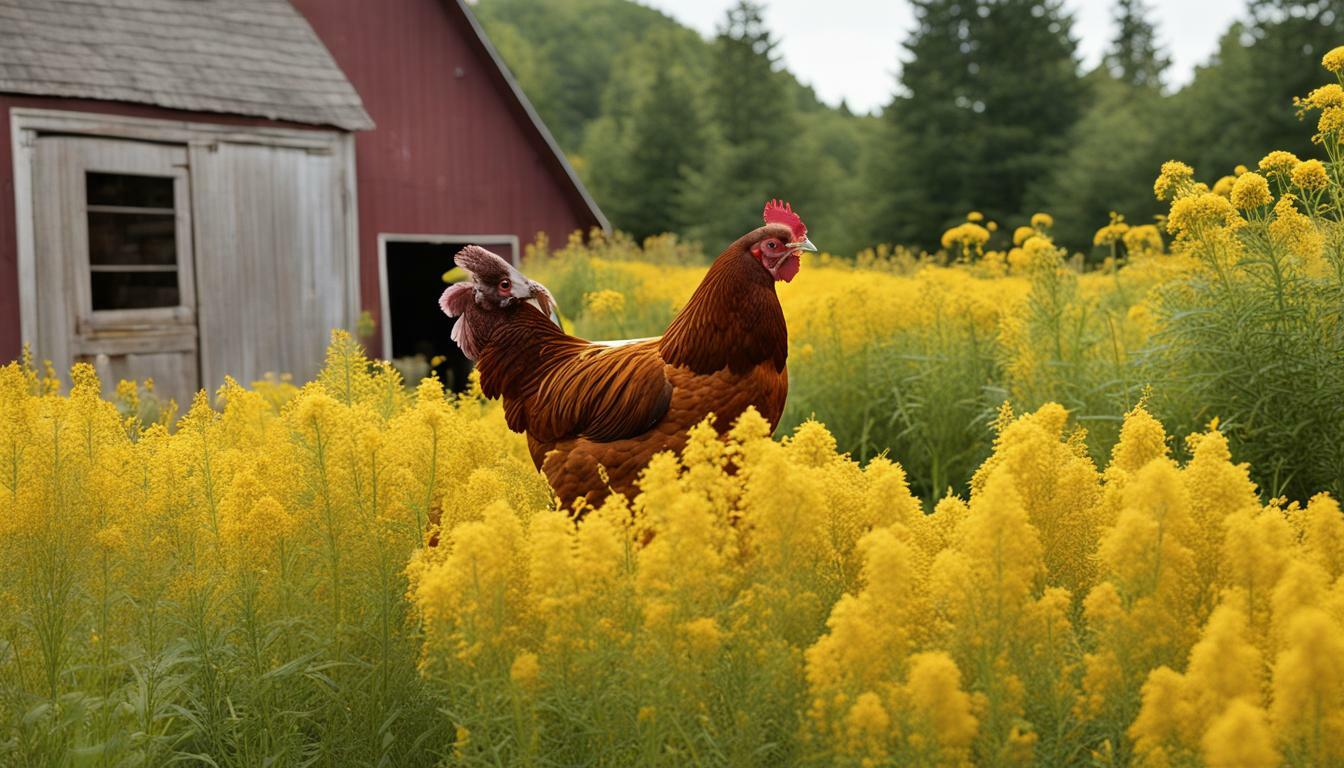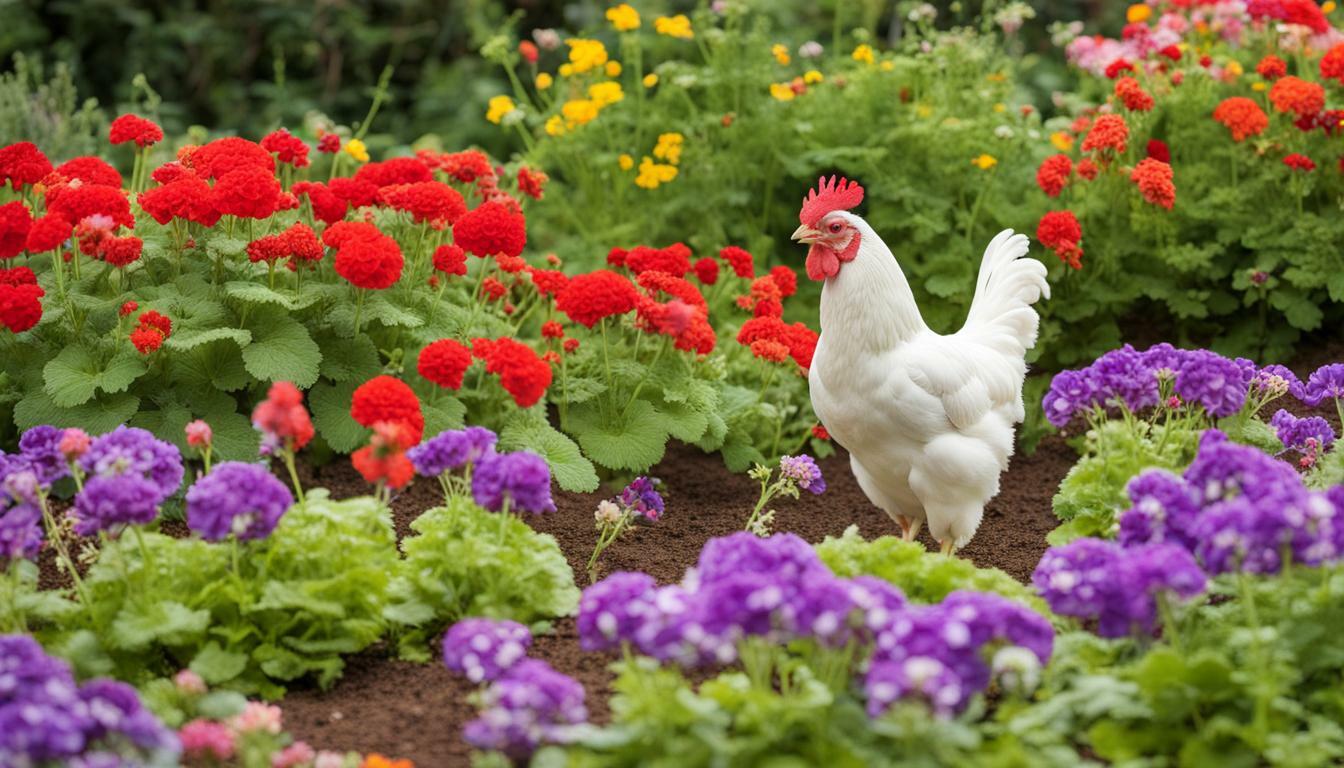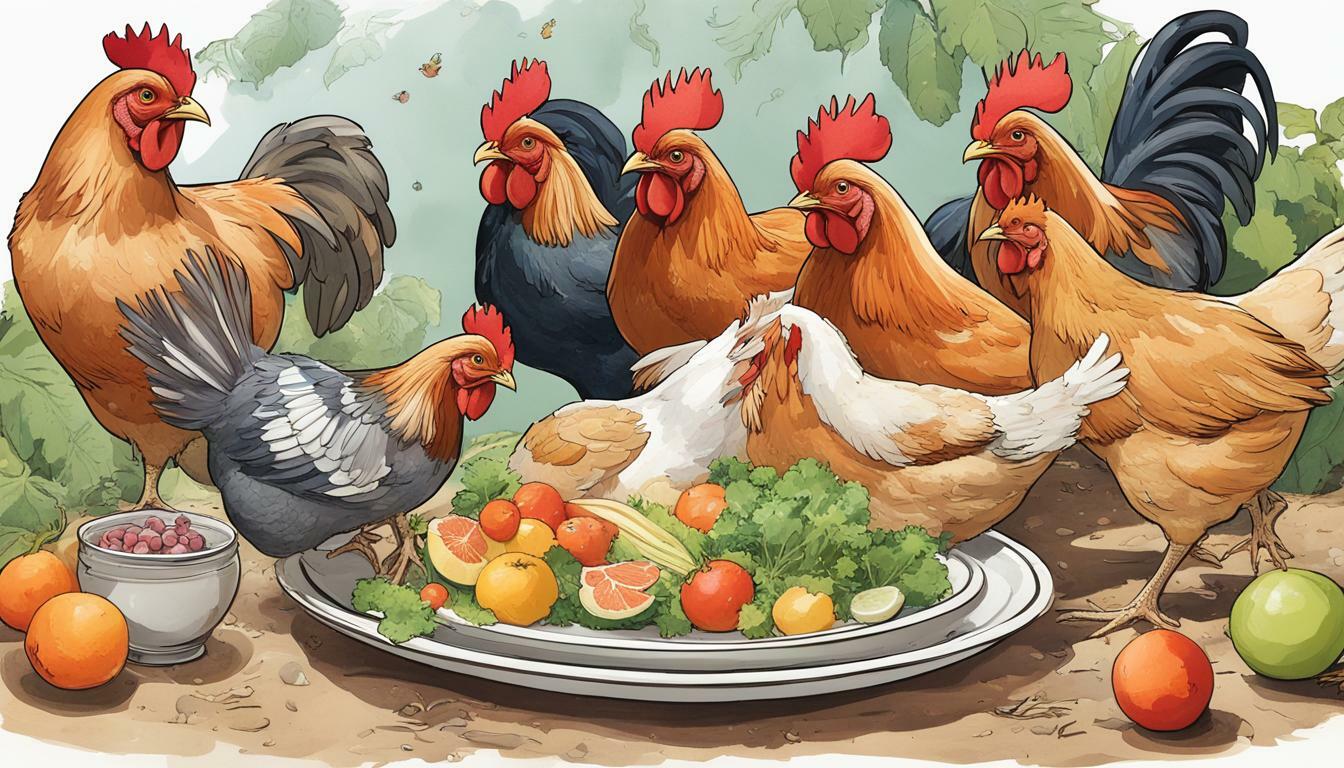Can Chickens Eat Goldenrod? Find Out Their Favorite Treats!

Table of content:
- Is Goldenrod Safe for Chickens?
- Benefits of Goldenrod for Chickens
- How Chickens Can Eat Goldenrod
- When to Offer Goldenrod to Chickens
- Health Concerns with Chickens and Goldenrod
- How Much Goldenrod Can Chickens Eat?
- Can Chickens Eat All Parts of Goldenrod?
- What About Roosters, Chicks and Other Poultry?
- Common Concerns about Foraging Chickens
- Further Monitoring of Chickens Foraging On Goldenrod
- Final Thoughts
Goldenrod is a wildflower that grows in many areas across North America. It blooms in late summer and fall with bright yellow flowers. As a common weed, goldenrod is often found growing on the edge of woods, fields, and roadsides. If you have backyard chickens, you may be wondering if this readily available plant can become a part of your flock’s diet. Let’s take a closer look at goldenrod and see if it’s safe and healthy for chickens to eat.
Is Goldenrod Safe for Chickens?
One of the most common questions surrounding goldenrod is, “Is goldenrod safe for chickens?” The good news is yes, goldenrod is non-toxic and completely safe for chickens to consume. Both the flowers and leaves of the goldenrod plant are edible and nutritious for chickens.
Unlike some weed species, goldenrod contains no poisonous compounds or alkaloids that could cause toxicity issues in poultry. As with any new treat, introduce goldenrod slowly and monitor your flock for any adverse reactions. But in general, goldenrod makes an excellent addition to a backyard flock’s diet and health.
Benefits of Goldenrod for Chickens
Goldenrod offers a variety of nutritional and health benefits for backyard chicken flocks:
- High in vitamin A, vitamin C, iron and calcium for strong bones, immune systems and egg production. The iron content also helps prevent anemia.
- Contains antioxidants like quercetin and rutin that support chicken health. These compounds have anti-inflammatory effects.
- Natural diuretic properties help flush toxins from a chicken’s system. Supports kidney and urinary tract health.
- The bright yellow flowers have high levels of lutein and zeaxanthin, carotenoids important for eye health.
- May help deter some external parasites like mites. The strong scent is thought to mask odors that attract mites.
With this stellar nutrition profile, it’s clear why goldenrod makes such a great supplement to a chicken’s main diet. The plant provides dense bioactive compounds, minerals and antioxidants difficult to find in commercial chicken feed alone.
How Chickens Can Eat Goldenrod
Chickens have multiple options when it comes to consuming goldenrod:
- Free-range flocks can forage and graze on fresh goldenrod when it’s available in late summer through fall. The chickens will eat both the leaves and bright yellow flowers.
- Gardeners can cut goldenrod stems and lay them out in the run for penned chickens. Hang bundles from roosts or fencing.
- Add dried goldenrod flowers and leaves to homemade treats and supplements. The dried plant retains many nutrients.
- Brew goldenrod into a tea using hot water. Let cool before offering as a treat in water dispensers. A nutritious tonic!
- Include goldenrod leaves, flowers or powder in DIY chicken feed mix or mashes. An excellent addition to increase bioactive compounds.
Make sure to inspect any foraged goldenrod for signs of mold, fungus or contamination. Provide leaves and flowers in moderation initially until chickens adjust. Free-range flocks will naturally supplement with the available fresh plant.
When to Offer Goldenrod to Chickens
Goldenrod blooms heavily in late summer and early fall. It starts dying back with the first hard frosts of winter. Here is a guideline for when goldenrod will be available seasonally:
- August – Goldenrod flowers start blooming in most regions. Foraging can begin for free-range chickens.
- September/October – Peak goldenrod bloom period. Abundant flowers and leaves make excellent forage. Gather stems for penned flocks.
- November – Frost kills back goldenrod growth. Last chance for fresh foraging and gathering.
- December – Switch to dried goldenrod stored from summer/fall harvests. Brew dried plant material into teas.
- January to July – Provide goldenrod supplements using dried leaves and flowers. Wait for new growth to start again.
With proper drying or preservation methods, goldenrod can provide nutritional benefits to backyard chickens year-round. Time seasonal foraging and harvesting when the wildflower is at peak availability in late summer and fall.
Health Concerns with Chickens and Goldenrod
While goldenrod itself is completely safe for chicken consumption, there are some important health considerations:
- Allergy concerns: Some flocks may have individual allergies or sensitivities to goldenrod. Introduce slowly and watch for any reactions.
- Ragweed cross-reactivity: People with ragweed allergies often react to goldenrod pollen as well. Handle with care.
- Respiratory issues: The strong fragrance from goldenrod may irritate sensitive respiratory systems. Avoid storing fresh cut plants indoors.
- Contaminants: Make sure all foraged goldenrod is free of herbicides, pesticides, fertilizers, dirt and mold. These contaminants can cause toxicity and illness.
- Balanced diet: Like any plant material, goldenrod should not make up the bulk of a chicken’s diet. Provide as part of a varied, diverse diet.
Monitor your flock closely when first offering goldenrod. Discontinue use if any chickens show signs of allergic reaction or sensitivity. Otherwise, this pretty yellow plant can become a safe, nutritious supplement.
How Much Goldenrod Can Chickens Eat?
When offering your flock treats like goldenrod, moderation is key. As a supplement, aim to limit goldenrod intake to:
- No more than 10% of total feed ration for adult chickens
- 5% or less of total feed ration for chicks and juveniles
For free-range chickens grazing on fresh goldenrod, let them self-regulate intake. The chickens will naturally consume what they need from the available forage. Avoid overgrazing local goldenrod stands. Rotate or partition off foraging areas to prevent land depletion.
When supplementing penned chickens with harvested goldenrod, introduce slowly over 2-3 weeks. Observe for any signs of sensitivity or over consumption. Scale back amount given if any diarrhea, lethargy or other reaction occurs.
Goldenrod is not calorically dense enough to become a primary food source, but makes an excellent supplemental feed. Take care not to overload your flock with any one feeding item. To maintain good flock nutrition and health, varieties and balance are key.
Can Chickens Eat All Parts of Goldenrod?
Chickens can safely consume all parts of the goldenrod plant, including:
- Flowers – The bright yellow blooms are the tastiest and most nutritious part of the plant. High in carotenoids. Choice forage material.
- Leaves – Leaves provide green bioactive compounds. Chickens will graze on leaves of actively growing goldenrod.
- Seeds – Many tiny seeds form after flowering. These seeds provide protein and fat. Chickens will scratch to find dropped seeds.
- Stems – Fiber-rich stems are low in nutrients but help round out digestion. Some stems are eaten during foraging.
- Roots – The roots have little nutritional value and are avoided. Chickens do not actively dig up and consume goldenrod roots.
The flowers and leaves will be the prime edible parts of the goldenrod plant sought out by foraging chickens. Provide a mix of all parts for penned flocks, except the roots which have minimal benefit.
What About Roosters, Chicks and Other Poultry?
Goldenrod makes a safe, nutritious forage and supplement for all types of domestic poultry:
- Roosters benefit from the same nutrition profile as the hens. May help boost vigor and fertility.
- Chicks and juveniles can start foraging on goldenrod early on. Limit intake to avoid sensitivity issues.
- Other fowl like ducks, geese, turkeys, guineas and game birds enjoy goldenrod as well. Tailor amounts to specific species.
Make sure to introduce goldenrod slowly to any new type of poultry. Observe closely for any signs of adverse reaction. Adjust amounts given accordingly.
For best results, provide goldenrod as part of a balanced, diverse diet tailored to the specific needs of the poultry species. Offer multiple different forages, treats and quality feed sources.
Common Concerns about Foraging Chickens
Those new to raising backyard chickens often have some common concerns when it comes to foraging behaviors:
- “Will the chickens eat my garden and landscaping?” Proper free-range setup and training is key. Provide designated foraging areas away from ornamental plants.
- “Aren’t wild plants dangerous for chickens?” Some wild plants are toxic, which is why plant ID and flock monitoring are important. But many wild plants like goldenrod provide excellent nutrition and variety.
- “Can chickens get enough nutrients from foraging alone?” Foraging should always be supplemental. Ensure free-range flocks have proper commercial feed available as their dietary staple.
- “Will chickens stop laying eggs without commercial feed?” Egg-laying requires balanced energy intake. Foraging alone is insufficient nutrition for optimum production. Quality feed must be given.
- “Should I be concerned about wild plants impacting egg or meat quality?” As long as foraged plants are non-toxic and safe, they typically do not affect quality. In fact, diverse diets usually improve quality.
The key is managing your free-range flock properly. Train chickens what areas are open for foraging, provide base feed rations, positively reinforce desired behaviors, routinely inspect edible plants, and supervise flock time outside of the run. Done right, foraging provides enormous benefits.
Further Monitoring of Chickens Foraging On Goldenrod
Once you start offering your flock goldenrod, continue to monitor:
- Forage material intake – prevents over consumption of goldenrod
- Body condition – watch for weight changes from increased supplementation
- Egg production – track for any positive or negative impacts from added nutrition
- Feather quality – influences from bioactive compounds in goldenrod
- General flock health – monitor for change in energy levels, immunity, and growth
- Manure quality – ensure droppings stay normal and diarrhea does not develop
Make notes if you see any correlation between introducing goldenrod and changes in production value or flock health parameters. Adjust amounts fed as needed.
For penned chickens, remove goldenrod if it starts to wilt, get dirty, or show any signs of mold growth. Keep fresh plants in rotation during foraging season. Monitor grazing areas for overuse as well. Rotate locations to prevent land depletion from overgrazing.
Final Thoughts
With its beautiful yellow flowers and natural nutrient density, the goldenrod plant makes an excellent supplement and forage material for backyard chicken flocks. Offer your chickens goldenrod as part of a balanced and varied diet. Take care to introduce new treats slowly while observing your flock’s health and reaction. Implement smart grazing practices for free-range birds. Following these tips will allow you to take full advantage of the many benefits goldenrod can offer chickens!
Welcome. I’m Adreena Shanum, the proud owner of this website, and I am incredibly passionate about animals, especially poultry. I founded adreenapets.com as a labor of love, stemming from my desire to share my knowledge and experiences with poultry enthusiasts worldwide.




